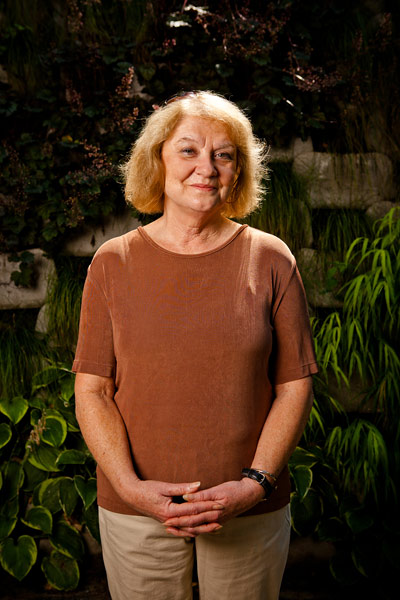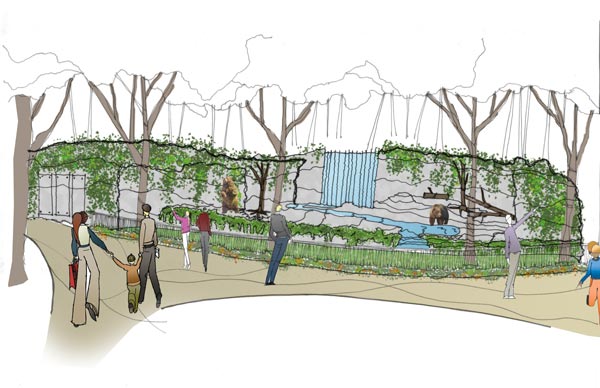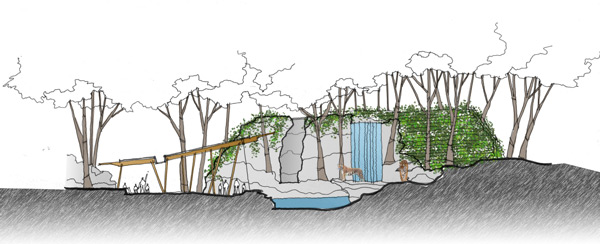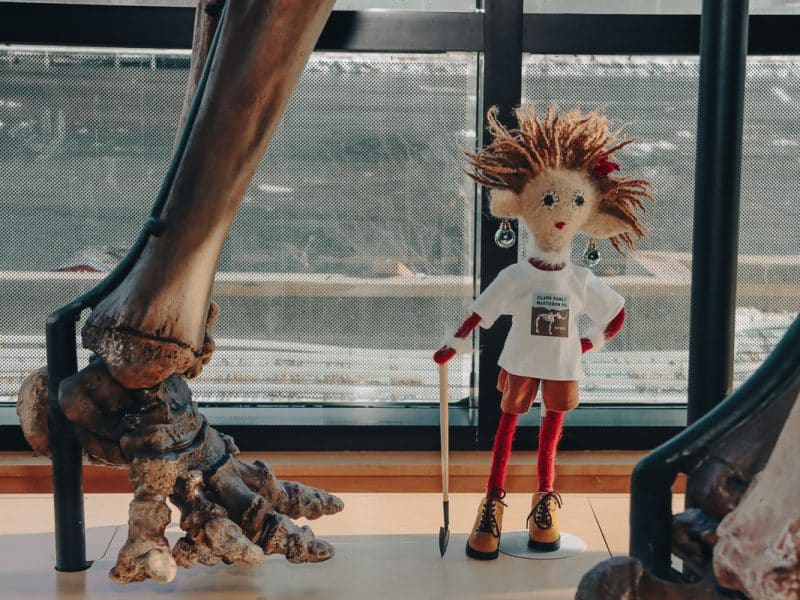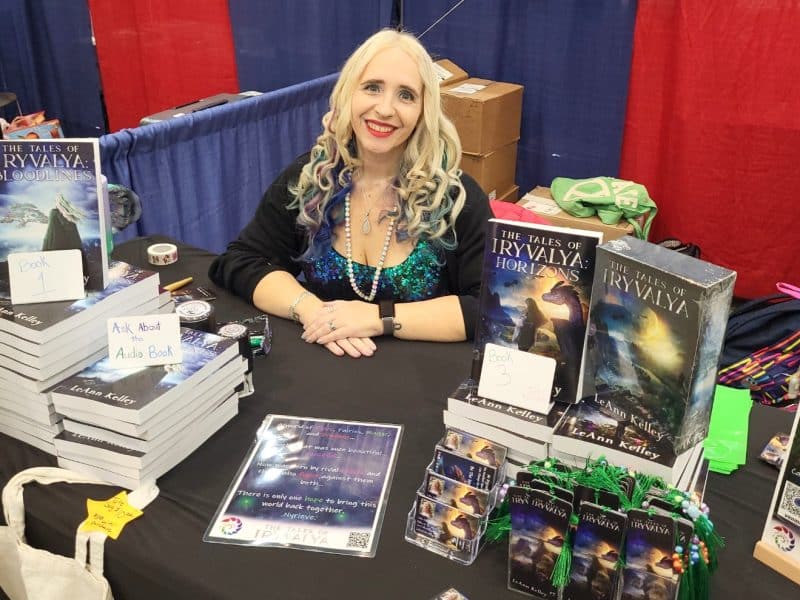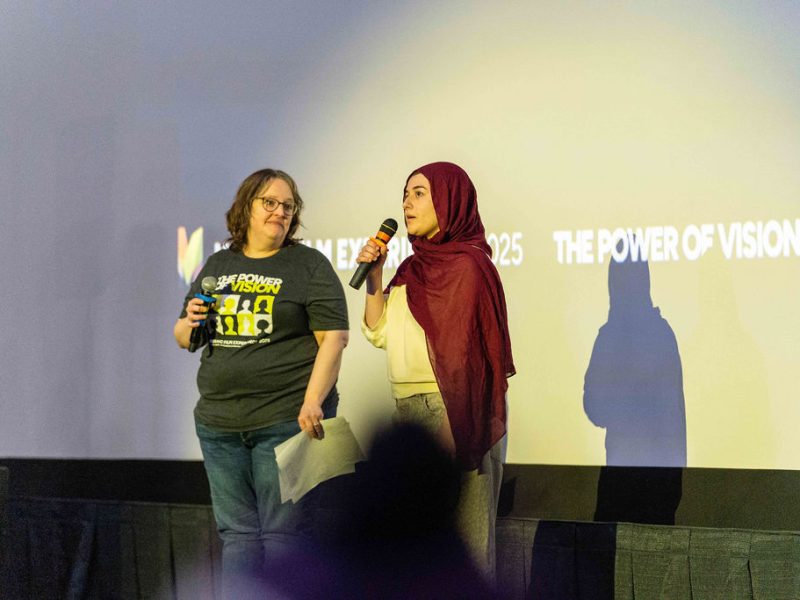Lions, Tigers and Bears: The Future of the John Ball Zoo
After receiving a $5 million donation earlier this year — the largest in its history — John Ball Zoo will nearly double in size by 2014. As executive director of the John Ball Zoo Society, Brenda Stringer’s job is all about challenge and possibilities.
Brenda Stringer’s job has never been boring.
“Every year has been different,” says Stringer, executive director of the John Ball Zoo Society. “There’s always been an opportunity for a new challenge.”
In January of 1981, after moving to Grand Rapids from Illinois, Stringer answered a blind-ad in a newspaper for a public relations position. When she was told the job was for John Ball Zoo, which she didn’t know existed, she decided to visit the zoo before her interview. She was disappointed, to say the least.
“It was awful,” states Stringer, bluntly. “It was just this series of little barred cages.”
Upon the encouragement of her husband, Stringer went to the interview anyway. She was uplifted when she was shown a master plan of changes and renovations and told it would be her job to promote the new zoo.
“So I thought, well that sounds like fun then, to help change something,” she recounts. Stringer accepted the job, and indeed, nearly everything has changed.
In addition to hefty construction, the zoo has gone from being city-owned to county-owned. Also, the Zoo Society has grown from one employee (Stringer) to sixteen year-round employees and 110 summer seasonal workers. Of course, under Stringer’s public relations talents, the zoo’s interaction with the community has changed too.
“It used to be the style of zoos to keep people away [from the animals], and now the goal is to get them closer and to give them literally hands-on experiences,” Stringer says. “I think culture has become so much more urban that people just don’t have the experience with wildlife that maybe they used to. I grew up on a farm and animals were just a part of life, and it wasn’t anything unusual. Kids that come to the zoo [have] never touched a goat; they’ve never seen a live cow. So to them, it’s such an experience and such an adventure to come to the zoo.”
In addition to the goats, cows and other farm animals found in the children’s petting zoo, there are four different sites — budgies, stingrays and sharks, wallabies and pygmy goats — where visitors can enter into the exhibit and interact with the animals.
Two of the most recent and most prevalent changes to John Ball Zoo are the Lake Manyara lion and chimpanzee exhibits, completed in 2008, and the renovation of Monkey Island in 2009 (originally built in 1949).
“I love sharing the chimp and lion exhibits. I think everything that we’ve done over the time I’ve been here has pointed to those two exhibits. They’re just great examples of what zoo exhibits should be,” Stringer says. “I think they’re great for the animals, they’re great for the visitor, and that’s kind of the goal for everything we do in the future. It’s got to be as good or better than those two exhibits.”
Still in their conceptual stages, the newly announced bear and tiger exhibits (scheduled for completion in 2013 and 2014, respectively) will be constructed with the same thoughtfulness as the chimpanzee and lion exhibits. The new bear exhibit will replace the existing concrete bear and sheep exhibits, which were built in the 1960s and are the oldest untouched structures in the zoo. By 2014, John Ball Zoo will nearly double in size, housing the new animal exhibits in addition to a significantly larger gift shop, a much-needed warehouse and storage facility, a hilltop treehouse able to hold special events and a funicular — a tram-like passenger service able to take visitors from the front entrance up the hill, northwest of the current zoo boundaries.
“We do know we want to keep those exhibits sort of soft,” Stringer states. “The zoo as a whole is fairly hard-scaped. It’s got a lot of gunite exhibits. We’d love to try to use the trees and hidden fencing and things like that and make it more of an open feel.”
Site construction on the Zoo’s previously undeveloped hilltop has already started, with heavy construction on the funicular and the treehouse starting this fall. The treehouse will be built with at least three glass walls, a viewing deck surrounding the building and a separate public-observation deck — all boasting grand views of downtown, while still surrounded by the natural, wooded environment.
“We hope that people feel like even though it’s not a real treehouse built up in the trees, that because you’re sort of surrounded by trees and you’re on the hilltop, it’ll feel like a treehouse,” explains Stringer.
The funicular and treehouse are scheduled to be completed in May of next year, and the Zoo Society hopes to have booking forms available online as early as next month to start taking reservations for weddings and special events in and after August 2012.
Much testing and design work remains to be done on the new animal exhibits and many decisions still need to be made, but one gets the feeling these are the kind of tasks and decisions that have kept Stringer at the zoo for 30 years.
“We’d love to be able to let the visitors play tug-of-war with the tigers. We’d love to see if you could put a big, thick rope through the glass and let the tigers pull on one end and the visitors pull on the other end,” she says with a smile, “but we don’t know if that’s possible. We just think that it’d be really cool, so in the process of designing the exhibit, we’ll find out.”
A more efficient Central Services warehouse with a storage area and animal commissary will be completed on the southwest side of John Ball Park at Butterworth St. SW and will eliminate service and delivery traffic at the front entrance of the zoo. Also scheduled to start construction this year is a 2200 sq. foot gift shop to replace the current 500 sq. foot store.
“Just like being a scientific institution or an eduction center, we’re a business and more and more we have to help support ourselves,” says Stringer.
These revenue-based projects are unprecedented to John Ball Zoo. According to a conceptual plan published online by the city of Grand Rapids in 2005, the new tiger and bear exhibits were the zoo’s main renovation priority at that time. The funicular and treehouse were drawn into the plan, but only as “optional enhancements.”
When the economy shifted, the zoo needed a large donation to continue with the 2005 plan at all. In April of this year, they finally got that donation. The zoo received $5 million — the largest donation in its history — from the Idema Foundation, which specifically expressed interest in the funicular and treehouse. In turn, the renewed hope now is that the building of the treehouse will provide the structural foundation needed to continue future development on the hill.
“It’s especially hard to raise money if a [lead] donor doesn’t come out of the box and say, ‘this is going to work’… that’s what the Idema Foundation did,” Stringer says.
Now, with the publicity of Idema’s donation, more donors have sponsored the new developments and the anticipated revenues earned from the treehouse and gift shop will help fund the new animal exhibits and the zoo as a whole.
“The real challenge now-a-days is really to try to keep your renewal of your zoo going, keep it fresh for your visitor, and at the same time, be financially sustainable,” Stringer says. “It’s a challenge, but it’s possible.”
Challenge. Possibilities. These are basic line items in Brenda Stringer’s job description… and she wouldn’t have it any other way.
J. Rae Young is a writer, bartender and community volunteer in Grand Rapids. She is a passionate promoter of Grand Rapids’ dynamic local music scene, venues and businesses, and an advocate of cultural understanding. She has taught English to primary school students in Tanzania, Africa, and treasures personal growth through travel.


